by Jaime Yarbrough, Vice President/co-founder of Genesis the San Francisco Chapter of the National Space Society. – December 24, 2020
The great majority of people alive today do not give space a lot of thought unless you are directly connected to the space effort. Most are aware of things like John Glenn, putting a man on the moon, Buzz Aldrin, the (retired) Space Shuttle / Challenger and Columbia incidents, Elon Musk wanting to go to Mars and his private competition with NASA (the National Aeronautics and Space Administration, a US Government operation.)
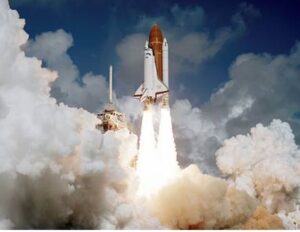
Few give much thought to the International Space Station which started its life in 1998 and two years later received its first long term residents in November 2000. The ISS has been continuously occupied ever since, just celebrating its 20th anniversary. Today and for much of the time in between people who are not connected to the scientific endeavors of humanity in space are concerned with survival, economics, (geo)politics, COVID19, the latest trends, entertainment and, naturally, the internet. Most youth are trying to learn about our world and make sense of what modern civilization has ‘created’ with mixed feelings. They are taught about all the wonderful things to learn about and explore yet are bombarded constantly with mass media messages of just the opposite.
There has recently been talk about even larger things beyond our horizons like black holes, worm holes, alternate universes, and parallel worlds. While some of these may sound ‘far out’ we can explore a ‘parallel world’ right here, right now. That world is of all the people responsible for the construction and operation of the International Space Station.
The story of space exploration is centuries old. It was only after man successfully made his venture off Earth did it take root and grow in the imaginations of people around the world. The mechanics and materials were ready or ready to be developed for the mission, all that was needed was a spirit to put them together. John Glenn’s orbital mission placed the United States in the lead, but the “space race” with the (then) Soviet Union was far from over. Once the US was firmly in the lead, we immediately understood that international cooperation was no longer an option but an imperative.
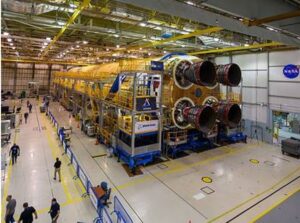
It was President Ronald Regan who, in an address to Congress in 1984 invited the international community to collaborate to commit to a permanent presence in outer space. Some of the initial participants to engage with the USA were, Russia, Japan, Canada, and participating European Space Agency countries (Belgium, Denmark, France, Germany, and Italy. Soon after they were joined by the Netherlands, Norway, Spain, Sweden, Switzerland, and the United Kingdom.
Altogether, to date 18 countries have had personnel aboard the ISS. Over 250 people have visited via over 400 manned flights not including additional unmanned supply missions. The cost largely paid by America but with significant contributions by member nations since 1994 is @ $ 100 Billion.
WHY? What is the purpose of spending so much money and living in a place where the environment wants to kill you? In short, to study microgravity. Let us go back to that “killing” part. First, space is a vacuum. There is no air. The ISS is in low earth orbit “LEO” circling the earth about 16 times each day (@every 90 minutes). As it does it goes from light (day) to dark (night) where in space, the dark side of the Earth is -250° F, to +250° F facing the Sun. Ambient temperature of space itself is -455° F.
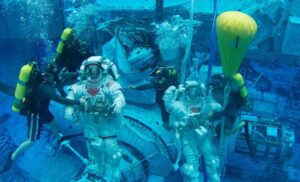
Now, to that parallel world I mentioned. From the beginning of the exploration of space, a new science needed to be created. Millions of people were involved figuring out how to build a rocket, the launch pad, the space suit, prepare for being in such an extreme environment. There were no ‘let’s see if this works’ opportunities. You either got it right or people would die. Colleges, engineers, institutes, factories, companies needed to be invented. Conditions simulated and countless experiments conducted before anyone left the Earth.
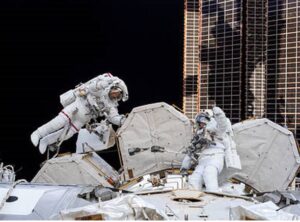
Who were these people? You may know some. They were/are the children, parents, aunts, uncles, cousins of the past, present and future. They continue to this very moment.
Doing what?
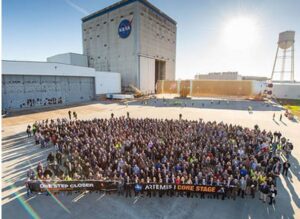
We as a reasoning species have discovered and named ‘a force’ we call gravity. Sir Isaac Newton was credited for explaining ‘why’ an apple falls to the ground from a tree. Surprise, to this day man still does not know exactly what gravity is or how it works! Yes, there are ‘theories’ but they are just that. This mystery is why the Large Hadron Collider (LHC) was built and the search for ‘the God particle’ continues. We are in search of why matter has ‘mass (e.g., weight),’ which is necessary for gravity.
Not to get too technical but the reason the ISS was built, is because while we do not fully understand what gravity is. We do know its effects. Or, at lease some of them. What we do not know is what happens to things without gravity. In space (LEO) things are considered ‘weightless’ and behave much differently without gravity. The ISS is a giant laboratory where countless experiments are conducted to discover the how’s and why’s of what happens to things, plants, animals, PEOPLE and materials in micro-gravity. I say ‘micro-gravity’ because the ISS is technically continually falling all the time. But, because of its velocity, centripetal force keeps it ‘in orbit.’
There are very few subjects, topics or fields of study that are not examined aboard the ISS. The ISS is traveling at @ 17,900 miles per hour!
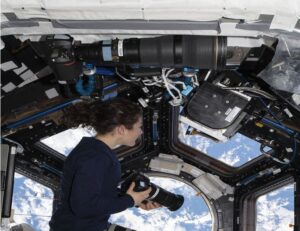
So, what other reasons are there for living in space aboard the ISS? There is a plethora of satellites that measure and photograph the earth but sometimes a human touch in needed to observe and record things that happen on earth. In addition, living in close quarters with fellow astronauts brings about psychological dynamics that must be planned for and addressed for future long-term missions. Remember quite often astronauts are from different countries and must operate with language barriers. Fortunately to be an astronaut it takes YEARS of training and language lessons are included.
As you might imagine, those aboard like everyone here on Earth, need to eat, sleep and all those other wonderful things we do. Because they cannot call up for ‘take out’ and, it is not actually safe to ‘cook’ in micro-gravity, most of their food is prepackaged here on earth. The closest they can come to cooking is warming up prepared food. What about growing food? Plants on earth grow opposite gravity. With no gravity what happens? This is a complex area of study, but plants can detect some gravity aboard the ISS. And, while astronauts can not grow their own food, they often eat their experiments.
There are many experiments on the effects of gravity on plants because yes, someday it is possible long-term habitation will happen. It is likely to involve ‘artificial gravity’ using rotation to simulate the rotation of the earth. ISS experiments will help understand the possibility of growing plants on the moon (in habitats), Mars, or even on asteroids.
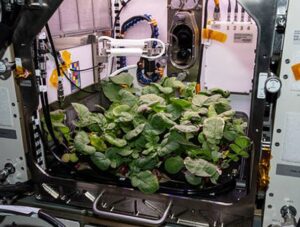
And what about water? There is little “waste” in the ISS. Everything is recycled. “Everything,” which includes food and human waste. Millions have been spent on recycling technology and it works. There are continual ‘supply missions’ which include additional food, equipment, and experiments and what can not be recycled is either jettisoned to burn up in earths atmosphere or returned to Earth.
One of the countries not mentioned at the formation of the ISS was China. China is not an ISS partner and no one from China is allowed on the ISS. China has its own space program and is in the process of attempting to establish its own ‘space station.’
This is the result of a couple of trust issues: the use of an anti-satellite weapon, indicating hostile military intent in direct violation of international space treaties, and the hacking of the Jet Propulsion Laboratory (JPL) resulting in the theft of intellectual properties. A ban was placed on China’s involvement in 2011.
So, what lies ahead for the ISS?
It is scheduled for operation to at least 2024 with an extension to 2028. So, there’s still time to study hard, get good grades and get up there. NASA is always taking applications for astronauts !
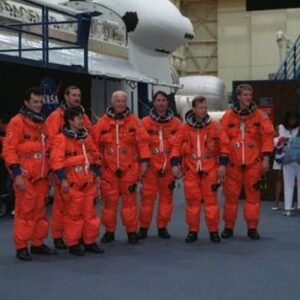
For more information visit www.NSASA.GOV



Wonderful article Jaime. Nice to know outer space is in play. Often wished it had happened sooner. Would have loved to participate.